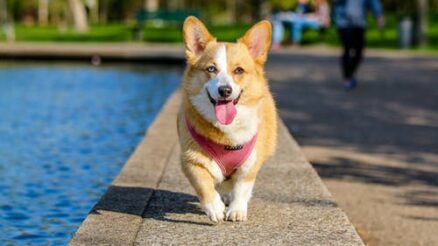Many fur parents shower their pets with love through treats and snacks, sometimes excessively, and often the wrong types. Sometimes we overfeed them during their meals because we’re unsure how much to feed or are carried away by their adorable, begging eyes. And if this keeps up for a long time, your pet may become overweight and risk developing multiple health issues.
Thankfully, a couple of simple adjustments can help maintain your pet’s weight in the healthy range.
How to Keep Your Pet’s Weight in the Healthy Range
If you believe giving your pet too many treats, snacks, and foods is the best way to make them happy, reconsider. When your pet becomes obese and suffers the repercussions of developing numerous health problems, this will only give them struggles and cost you large sums of money in their treatment. This is where the importance of keeping a healthy weight comes in.
Here are five guidelines to do so:
1. Improve Their Environment
A boring environment can cause your pet to become inactive and put on weight. Felines and canines are clever animals that will enjoy food puzzle toys, treat balls, and chew toys that can keep them moving and stretching to reinforce their muscles and maintain a healthy weight.
2. Adjust Seasonally
If your dog is more active during the summer and stuck inside the home every winter, change the amount of food you feed them as needed. If your dog is less active in winter and you don’t balance their meal portions, they may put on more weight, so it’s essential to set their diet depending on their active season.
If it’s winter and you’re worried about your inactive pet dog, there’s usually nothing to be afraid of. But if you suspect an unknown underlying problem, take them to facilities like Westside Animal Emergency Clinic. These places offer veterinary laboratory services to diagnose and treat pet conditions right away.
3. Keep Them Active
Keeping your companion active is as important as their nutritional diet. Regular walking is the easiest activity to keep your pet dog active. It helps exercise their body, enhance muscle tone, reduce boredom, and provide mental stimulation. Other than walks, try jogging and playing fetch with their favorite balls. You may also set routine visits to the dog park or simply have fun in your yard.
Always observe moderation when doing activities with your pet. If your dog mistakenly fractures one of their legs during an exercise, stop the activity immediately and take them to an emergency vet to address the situation. You may browse the web for more information about emergency veterinary care.
4. Weigh Them Regularly
When you take your four-legged friend to a Westside veterinary clinic for regular vaccinations and parasite prevention, do not forget to weigh them. Keep a record of their weight each time you do so you can check if they’re gaining or losing weight. Doing so can prevent minor issues from becoming severe. Don’t hesitate to ask the vet if you’re unsure of your pet’s supposed weight. They can give you advice and suggest tailored adjustments to maintain a healthy range for your pet.
5. Skip the Table Scraps
Not all human foods are safe for canines, so regularly feeding your dog with table scraps can be a dangerous and worst thing to do. High-quality canine foods are nutritionally balanced, so it’s the most recommended diet to feed them. Feeding them a lot of human food might cause nutritional deficiencies. If you like to share your food with them, make it an occasional treat and consider the healthier choices.
To End
Dogs on a diet may still ask for food even after you feed them. Try petting them, giving them affection, or taking them for a walk instead of feeding them more. Doing so can help remove their idea of getting attention by asking for food, and your love might fulfill their cravings. If this does not work, divide your pet’s allotted daily food into smaller portions. This might help keep them satisfied than giving them their meals in one go.


